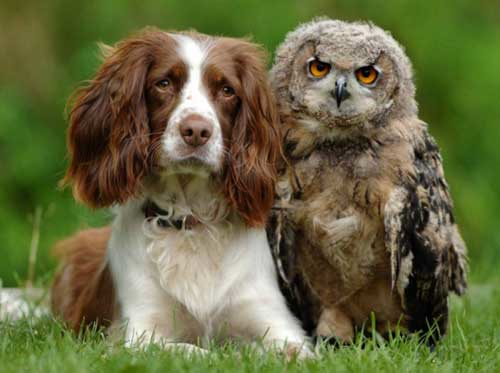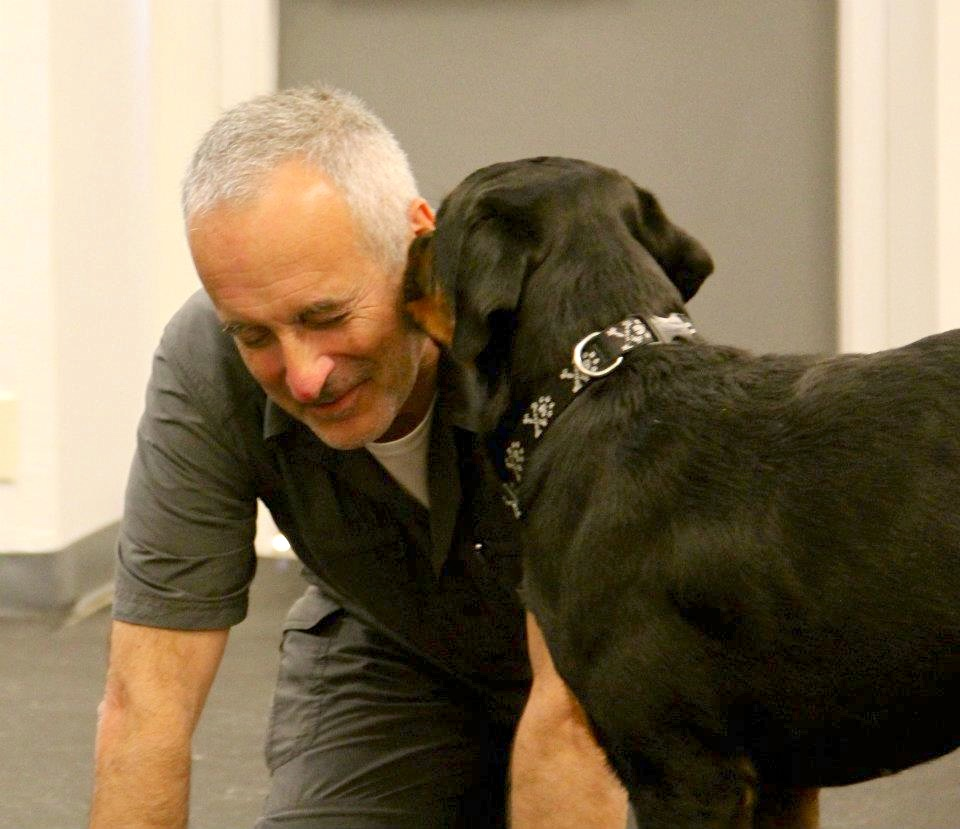“Do dogs understand what we say?” is one of the most frequent questions people ask me.
My answer is, “yes and no. They do, and they don’t. It all comes up to what you mean by understanding.”
Dogs do not understand English or any other human-created language. They do understand words (or rather, sounds) in any language. After hearing “sit” many times, the dog associates it with a particular behavior and with some consequences; and will end up sitting more often than not when it hears that sound. It all depends on the consequences and of the competing stimuli at that precise moment. If the dog has something better to do, offering more attractive consequences, or the consequences for not sitting are not that unpleasant, then it won’t sit. In that respect, it is exactly like us, “I understand perfectly well what you are saying, I just don’t want to do it.”
Dogs do not understand sentences. Most dogs get excited and run to the door when we say, “Let’s go for a walk.” That does not prove the dog understands the sentence, only that it associates one sound in the sentence, probably, the word walk, with one particular behavior. If we say, “Banana ping-pong walk,” we will very likely get the same response.
Tone matters. We don’t need any experiments to verify that. Observing casual dog owners provides us with all the necessary evidence. “Don’t do that, sweetie, we don’t like that at all,” with a gentle voice, is no way to prevent a dog from doing whatever it is doing. Better be quiet if so, because all we say in that tone will only reinforce the behavior we don’t want. Curious, isn’t it, how things can work just the opposite of what we intend?

There is a universal language with terms all animals understand, terms like peace, danger, companionship, fear, safety, mutuality. Partnerships exist between animals across species (photo by unknown).
If you want your dog to keep on doing what it is doing, you’d better say something in a sweet tone. It does not matter what you say, but it will be more efficient if you always use the same word. Personally, my favorite is dygtig (Danish for clever). It has a good doggy sound, gives me a friendly, doggy face, and I can modulate it for the occasion, e.g. make it long, short, etc.
If you do not want your dog to do something, you’d better say it in a serious tone (I said serious, didn’t say yelling). I use, “Stop,” or “Phooey” in an assertive tone, and that does the trick (usually). I never use “No” for this purpose. “No” conveys important information, i.e., “What you’re doing is not adequate, try something else.” Of course, you don’t need to do as I do. You do what works for you, and I do what works for me.
Body language is essential, and even more decisive for the behavior of our dogs than sounds and tones. If you doubt it, watch my movie “Animal Training My Way.” I barely talk to the dog, and we understand one another perfectly well. Self-confident body language will induce your dog to follow your instructions more readily. Insecure body language will either make your dog nervous or alert it to take control of the situation since you seem to be in no stand to do anything about it.
Does it help to attempt to speak dog language even if with an awful accent? Yes, definitely. Dogs respond well to our yawning, champing (chomping), licking our lips, squeezing our eyes shut, pouty mouth, the canine muzzle grasp, and many other signals. You need to be a keen observer and to practice; to be completely uninhibited and unconcerned about others laughing at you. I like to do it, and I have excellent results. Then again, I speak nine languages (doguese, catese and horsish not counted), some with a poor accent—and I do get rewarded for my effort. It works for me, but again, you do what works best for you.
Do dogs create relationships with us like they do with other dogs? Not exactly, but does it matter? Dogs are uncomplicated. When they live together with other animals, humans included, they adapt (as do many other animals). They don’t regard us as dogs, and I believe they don’t even speculate about that. They communicate with us in their language, and they seem to appreciate when we answer them in something that resembles their language. There’s nothing special about that. It works for and with most animals (if not all). You respect their ways, and you get some results—you don’t, and you get different results.
It’s all a question of communication. When I’m diving with rookie students, their way of moving around, gesticulating far too much, attracts the attention of the local fauna. When I’m there with my diving buddy (we always dive in buddy pairs), they don’t even seem to notice us. The body language of the rookie signals “alarm,” “intruder”—and ours, more experienced as we are, signals “all is good.”
It’s that simple. I don’t get it how someone can claim that attempting to meet the other party halfway is in vain. The argument is that dogs are dogs, and we are humans. That’s a remarkable justification defying all evidence we have about interspecies communication—hence, my commitment to “knowledge to everyone everywhere.”
All I can tell you is that it works well for me. With my inadequacies and until a set limit, when I’m in Rome, I do as Romans do—when I’m underwater, I do as fish do, and when I am with a dog, I do as dogs do. Of course, none of this obliges you to anything in particular.
Featured image: Dogs communicate with us in the ways of their species, and they seem to appreciate when we answer them in something that resembles their language (photo by Lisa Jernigan Bain).
Learn more in our course Ethology and Behaviorism. Based on Roger Abrantes’ book “Animal Training My Way—The Merging of Ethology and Behaviorism,” this online course explains and teaches you how to create a stable and balanced relationship with any animal. It analyses the way we interact with our animals, combines the best of ethology and behaviorism and comes up with an innovative, yet simple and efficient approach to animal training. A state-of-the-art online course in four lessons including videos, a beautiful flip-pages book, and quizzes.


2 thoughts on “Do Dogs Understand What We Say?”
Comments are closed.